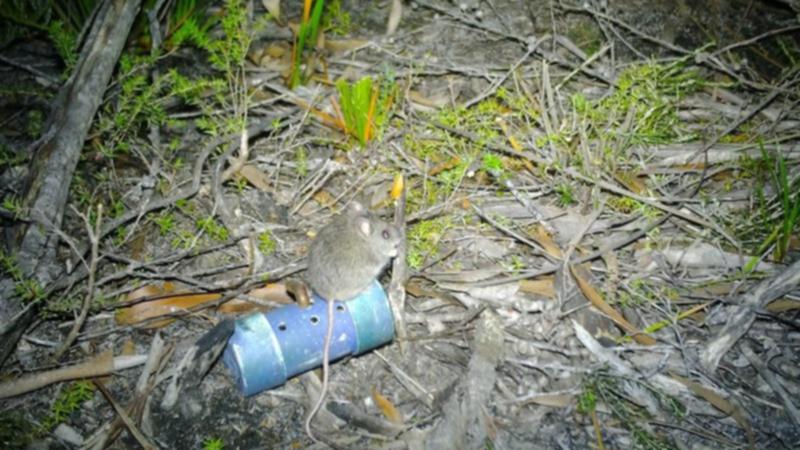Adorable native mouse rediscovered in Tasmania

A native mouse not seen in Tasmania for 17 years has been recorded on the state’s remote Flinders Island inspecting a peanut butter-covered stick.
The New Holland mouse, which is listed nationally as being vulnerable to extinction, was feared to have disappeared from the island state.
That was until a few weeks ago when intensive surveying efforts, including 47 cameras, caught footage of the mammal.
“We’d done a lot of survey work on mainland Tasmania and hadn’t found the species,” Department of Primary Industries, Parks, Water and Environment biologist Billie Lazenby said.
“Our expectations were gradually falling. When we did pick it up on (Flinders) Island it was an intense relief.”
The last confirmed Tasmanian sighting of the species, which grows up to 90mm long and is found in Victoria, NSW and Queensland, was 17 years ago in the state’s northeast.
The most recent evidence of its existence came in 2010 when hair samples were collected at Waterhouse Conservation Area in the far northeast.

Dr Lazenby says the New Holland mouse appears distantly similar to a house mouse but does have some notable differences.
“It’s nowhere near as athletic looking. I often say it looks a bit like a dumpling on legs,” she said.
“They’re quite round and they sort of lack a neck. The cuteness factor is way up there.”
Numbers of the mouse and other native rodents have declined severely since European settlement and the introduction of feral predators like cats and foxes.
Dr Lazenby says the New Holland mouse is experiencing “severe ongoing decline” in its distribution and abundance in Victoria.
The devastating 2019/20 bushfires are thought to have impacted more than 45 per cent of the species’ range.
The mouse came out of hiding to check out a stick dipped in peanut butter, something Dr Lazenby said was often used as a lure because of its distinctive odour.
Another was caught on camera, with further surveys to be undertaken on Flinders Island in coming weeks.
Dr Lazenby said the species, known scientifically as Pseudomys novaehollandiae, plays a role in the ecosystem similar to other small mammals.
“They play a great role as little earth engineers,” she said.
“They dig complex burrow systems, so they’re moving mounds of dirt and aerating the soil.”





